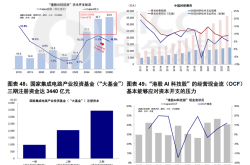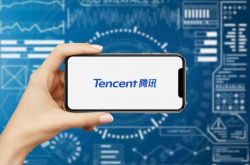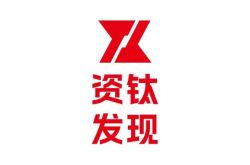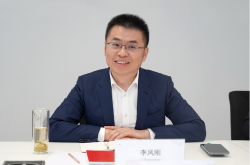Tencent's Insight: Paddling Through the Industrial Internet Depths with AI as the Oar
![]() 11/14 2025
11/14 2025
![]() 510
510
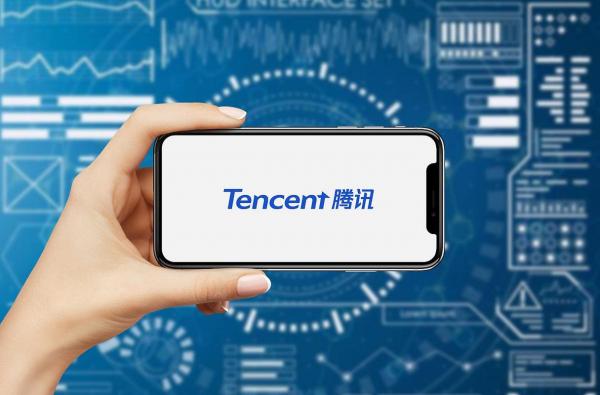
Tencent's strategic foray into AI has started to bear fruitful results, as reflected in its recently released Q3 financial report. According to Tencent's latest Q3 financial report for 2025, the total revenue for the quarter soared to RMB 192.87 billion, marking a 15% year-on-year increase. The operating profit reached RMB 72.57 billion, up by 18% year-on-year, outpacing revenue growth for several consecutive quarters. A closer look at Tencent's Q3 2025 financial report reveals that the financial technology and enterprise services sector, represented by TO B businesses, stands out as a beacon of growth.
A comprehensive review of Tencent's TO B businesses uncovers that their expansion is intricately linked to AI. Ma Huateng, Chairman and CEO of Tencent, remarked, "Our strategic investment in AI has not only enhanced business areas like targeted advertising and game user engagement but also boosted efficiency in programming, video game console production, and other domains."
AI has emerged as a pivotal breakthrough for Tencent in advancing its TO B businesses. With AI as the guiding oar, Tencent is navigating the vast expanse of the industrial internet. Analyzing Tencent's AI implementation strategies could provide a blueprint for entering the industrial internet era and offer valuable insights for other industry participants.
Leveraging AI to Deeply Root in Industries
The essence of the industrial internet lies in transforming industries. Therefore, identifying effective methods for industry transformation and continuous change is crucial for the successful implementation of the industrial internet. Reviewing Tencent's Q3 financial report, it is evident that Tencent is persistently exploring and embedding itself in various industries. In this endeavor, Tencent's most significant breakthrough has been the continuous integration of AI, using 'user-friendly AI' to drive the ongoing evolution of the industrial internet.
On one hand, Tencent is continuously refining its AI capabilities, fostering the iteration and evolution of its AI products. On the other hand, Tencent is open-sourcing its AI, embedding its roots deeply into the fertile soil of diverse industries.
In terms of foundational models, Tencent has propelled the continuous evolution and updates of the Hunyuan family, enabling it to support more complex and diverse industrial-grade applications. For instance, Hunyuan Image 3.0 topped the international large model arena LMArena, becoming the world's first open-source industrial-grade native multimodal generative model. Additionally, Hunyuan 3D 3.0 achieved a threefold increase in geometric modeling accuracy, with a resolution of up to 1536³. Leveraging the 3D AI creation pipeline output by Hunyuan 3D Studio, it caters to industries such as game art, 3D printing, and industrial design.
A closer analysis reveals that Tencent's AI model evolution is more closely aligned with specific industries and scenarios, leveraging AI to transform industries and unlock greater value. It is foreseeable that as Tencent's AI capabilities upgrade, its connection with industries will deepen, bringing about more AI-driven changes. In essence, AI has become a pivotal tool for Tencent to implement the industrial internet.
However, to root more deeply and extensively in industries, relying solely on AI iteration and upgrades is insufficient. Through Tencent's Q3 financial report, we observe that Tencent is continuously injecting new vitality into AI through open-sourcing, creating a vast ecosystem encompassing various industries and scenarios. The financial report highlights that in the third quarter, Tencent open-sourced models such as Hunyuan Translation, Hunyuan Image 3.0, Hunyuan 3D-Omni/3D-Part, and World Model 1.1. Among these, the Hunyuan 3D series models have surpassed 3 million downloads, becoming the world's most popular open-source 3D models.
The most direct takeaway from Tencent's Q3 financial report is that Tencent is genuinely applying AI to industries, addressing pain points and challenges in industrial development, thereby achieving product renewal and finding new growth avenues in the era of mature markets. Take Tencent Yuanbao as an example; it has seamlessly integrated with dozens of internal Tencent applications such as WeChat, Tencent Meeting, and Tencent Channels, supporting interactions in comment sections of public accounts, video channels, Tencent News, and QQ Browser, as well as enabling in-app interactions with Yuanbao.
Evidently, Tencent has embedded AI into its products and services, allowing users to genuinely feel the changes brought about by AI implementation in industries and activating internal industrial elements through AI. From the industrial internet perspective, Tencent's AI-driven exploration and practice demonstrate its ability to transform its industry and find ways to reconnect the industrial and consumer ends.
For any player aiming to make a mark in the industrial internet era, continuously leveraging AI to drive industrial iteration and innovation is essential to truly implementing the industrial internet and discovering a larger, more imaginative new world within the consumer internet ecosystem.
AI as a Catalyst: Reshaping the Industrial Foundation and Base
The industrial internet is a novel process that unfolds from the inside out and from the bottom up. Therefore, implementing the industrial internet requires not only embedding in various industrial scenarios but also reshaping the industry from its foundation and base. Through Tencent's Q3 financial report, we see a clear roadmap for the industrial internet: driving upper-level industrial transformation through changes at the foundation and base, thereby achieving industrial transition and upgrade.
Through Tencent's exploration and practice, we observe its continuous use of AI capabilities to elevate the industrial foundation and base. For instance, Tencent achieved a comprehensive upgrade of Tencent Cloud Intelligence by increasing model startup speed by 17 times and multimodal reasoning speed by 4 times. It also significantly reduced KVCache usage through self-developed and open-sourced FlexKV multi-level caching technology, making reasoning deployment more efficient and reducing first-character latency by 70%. Additionally, Tencent reduced troubleshooting time from 30 hours to 3 minutes, enhancing troubleshooting efficiency, and integrated Agent capabilities into Cloud Intelligent Advisor, launching the Cloud Expert Service Intelligent Agent, Cloud Mate, which shortened enterprise heavy-duty drills from a week to a day. Moreover, Tencent fully introduced Agents into Tencent Cloud, optimizing analysis, tuning, and operation and maintenance to enhance data processing efficiency. Its data warehouse, TCHouse, topped the ClickBench rankings with millisecond-level real-time analysis capabilities, becoming the most crucial data base for enterprise AI services.
By continuously transforming the industrial foundation and base, Tencent achieved upgrades in its products and business capabilities. Tencent Meeting introduced AI summaries and AI hosting, providing real-time summaries every 2 minutes, supporting one-click post-meeting follow-ups, and attending meetings on behalf of users to ensure work efficiency and progress. Tencent Electronic Signature launched intelligent contract solutions, completing contract reviews in as fast as 1 minute and reducing overall contract compliance risks by 80%.
An AI-centric foundation and base not only improved Tencent's products but also facilitated collaborative upgrades and transformations in industry services related to Tencent from the inside out and from the bottom up. For instance, the Guangzhou Institute of Respiratory Health collaborated with Tencent to develop the DeepGEM large model, which can predict key lung cancer gene mutations using only pathological images, achieving up to 99% accuracy. Additionally, Juewei Foods, based on Tencent Qidian Marketing Cloud's Magic Agent, launched an AI member intelligent agent, achieving full-link marketing participation by AI Agents for the first time. Tests showed that the AI group's sales performance was 3.1 times that of the manual group, with a 2.4 times higher payment conversion rate.
Through the roadmap explored by Tencent, we see that achieving the industrial internet and industrial transformation and upgrade necessitates using AI to reshape the industrial foundation and base. Such profound changes at the foundation and base can reshape product capabilities, continuously empower linked industries, enhance industrial efficiency, and promote overall industrial transformation and upgrade.
For any player aiming to make a mark in the industrial internet era, continuously strengthening the foundation and base and using them to drive changes in upper-level products and industries is essential to truly ushering in a new era of industrial internet development.
In this process, the gap between traditional platforms and industries will gradually narrow, making them integral parts of the industrial internet context. Only by continuously building new industrial heights on the foundation and base provided by AI can one genuinely reap the benefits of the industrial internet.
Tencent's Q3 financial report is not merely a financial document; it showcases Tencent's exploration and practice in navigating the industrial internet with AI as the oar. Ultimately, achieving the industrial internet requires not only identifying new infrastructures like AI but also deeply embedding in various industrial scenarios and building a solid and efficient foundation and base. Only then can the edifice of the industrial internet soar higher, and the imaginative space it opens up continue to expand.

